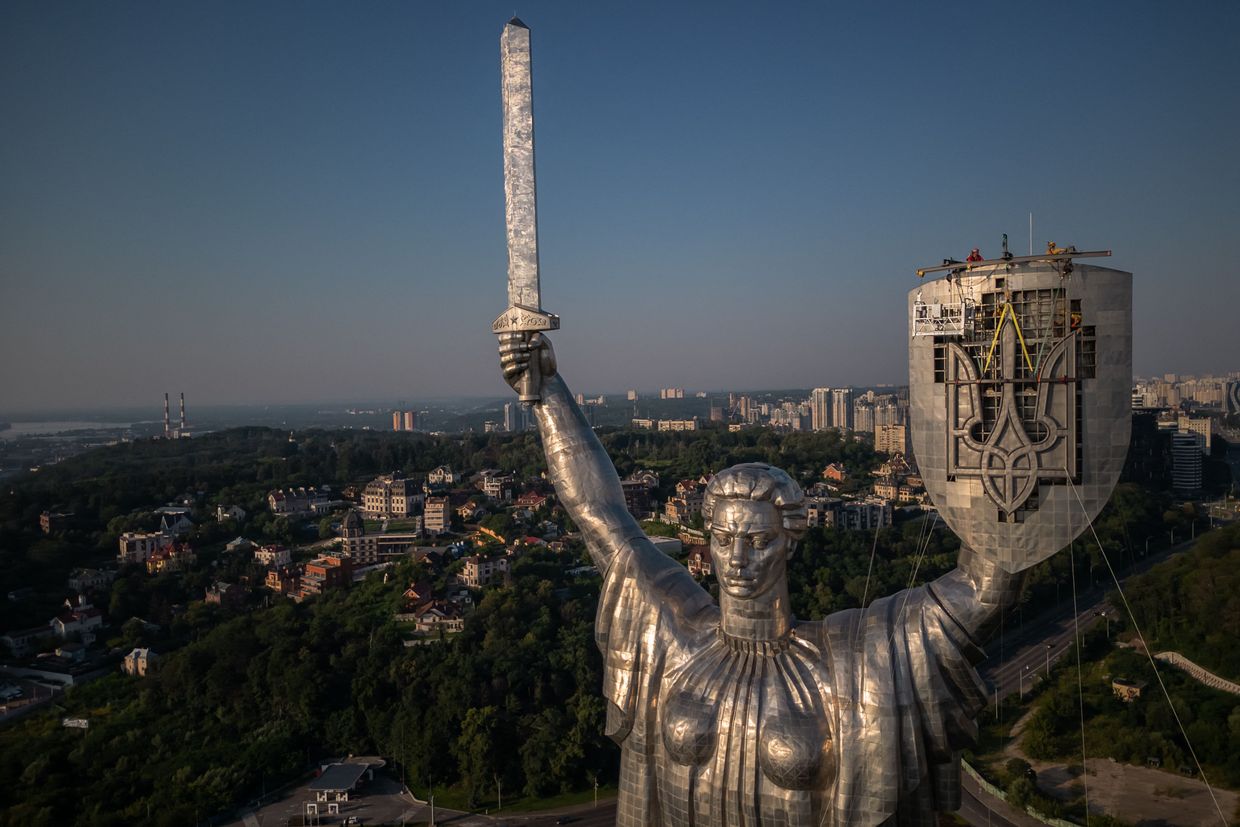Opinion: How we’re reforming Ukraine’s defense ministry

Editor's note: Read our interview with Stanislav Haider here.
The Defense Ministry is one of Ukraine’s oldest bureaucratic structures. As such, it has long-established customs and procedures, some of which no longer meet the challenges of today. My mission as the deputy minister for institutional development is to help develop an institution that incorporates the best practices of an advanced democratic society.
If you compare the ministry’s development to building a house, it started off as a singular room. As time went on, more rooms were attached to it, morphing to accommodate changing needs. The house’s living room was split in two to make a kitchen, which was then expanded to accommodate a stove and again broken up to make room for a hallway, and so on. In essence, it has been a never-ending cycle of flux and half-baked solutions.
Ukraine’s Defense Ministry created the role of deputy minister for institutional development just over 100 days ago to initiate reforms that will help build the ministry of the future without disrupting critical day-to-day operations. This important mission is now my responsibility.
Institutional changes from scratch
In our first 100 days, my team focused on developing a plan for the ministry’s multi-stage transformation, identifying the key processes that need to be overhauled. We created a new system for setting objectives, as well as processed large amounts of data to gain greater awareness of the pace of our reforms and the ministry’s performance. We also cooperated with experts and our partners to grow our institutional capacity.
The ministry’s bureaucratic structure is riddled with superfluous processes, many of which are not working toward a common objective. Many of the ministry’s units lack a coordinated focus and mutual integration.
To address this, I relied on the principles I applied to my work on transforming the city of Drohobych in western Ukraine and the National Agency on Corruption Prevention (NACP): institutions must act as a single entity, not separate units. Performance must thus be based not on each individual unit’s achievements but on the results achieved by the system as a whole.
While streamlining the Defense Ministry’s bureaucratic structure, we looked for guidance from NATO member states’ best practices for developing the military instrument of power – or leveraging all means necessary to safeguard national interests.
Democratic oversight
Another important component of our work has been to increase democratic oversight over the implementation of the ministry’s strategies, projects, and resources. We have worked alongside civil society, other branches of government, lawmakers, foreign defense advisors, and the military to develop legislative initiatives to grow this dynamic.
By increasing democratic oversight, we are ensuring that the ministry's policies reflect the will of society, respect the legal rights of military personnel, follow a forward-looking vision, and support military personnel and civilians. These efforts are also a prerequisite for Ukraine's NATO integration and membership.

Transforming key processes
Streamlining the process for receiving international military assistance was one of our key priorities in the first 100 days. We developed a new model, making the General Staff of Ukraine’s Armed Forces the only body that provides partner countries with a clear list of the military’s needs.
By receiving international military assistance through a “single window,” we adopt a systematic approach to determining priorities regarding international assistance, ensure transparency and control of the process, and mitigate risks by tracking all material resources from their delivery to their application.
We have also initiated a fast-track system for weapons and military equipment, allowing them to be delivered to Ukraine’s Armed Forces much quicker. We have additionally detailed a comprehensive list of the key problems that prevent the design, scaling, and implementation of new types of weapons and military equipment.
Another major area where we have identified numerous problems is the procurement of equipment for military personnel in the rear. Among the most pressing issues are preventing the duplication of functions and powers that lead to delays and unnecessary red tape, as well as establishing a coordinated system for monitoring and evaluating suppliers’ capabilities and performance.
As part of the transformation of key processes, we plan to form and launch several deregulation packages to simplify the processes of document circulation, use and transfer of military property, etc.
Establishing a supervisory board for the Defense Ministry’s Institutional Advisory Council (IDC) is another ambitious goal for the first quarter of 2024. The goal is to get high-level subject matter experts from partner countries to engage on issues related to the Defense Ministry’s institutional transformation. While this concept is not new, we have fine-tuned the previous model.
Situational awareness
The Defense Ministry has introduced a data management policy to increase the ministry’s situational awareness, developing an understanding of its environment, its elements, and how they both change in response to various factors.
Steps were already taken during our first 100 days: The Defense Ministry’s Situation Center is operating 24/7, working to provide more accurate crisis responses, rapid assessments, and actionable guidance for senior leadership.
There is, of course, much left to do. Our plans for the next quarter include:
- Determining and implementing the ministry’s new key objectives for 2024;
- Cataloguing the ministry’s processes to redesign and streamline its components;
- Developing the ministry’s human resources by ensuring the quality of personnel and streamlining automated personnel operations;
- Establishing a full-fledged data strategy and situation center;
- Launching the supervisory board for the Defense Ministry’s Institutional Advisory Council (IDC), which will help us engage high-level experts from Ukraine's partner countries in matters related to institutional transformation;
- Introducing several deregulation packages to simplify processes related to the use, circulation, and transfer of military property and document management.
Our goal is to build an effective institution that will help to defeat the enemy. Our long-term vision is to develop a new defense ministry – a capable institution that is better equipped to promptly anticipate threats and deter any potential enemy from daring to use force against Ukraine.
Editor's note: The opinions expressed in the op-ed section are those of the authors and do not purport to reflect the views of the Kyiv Independent.














